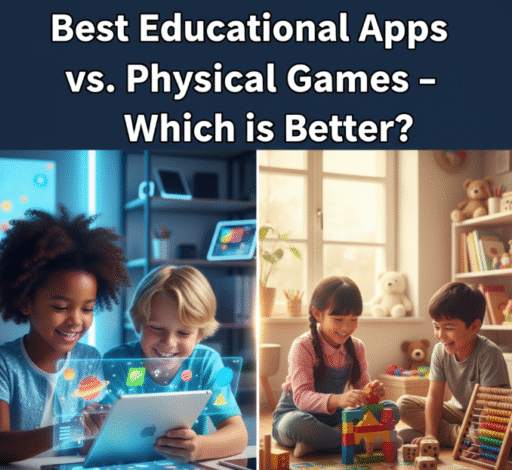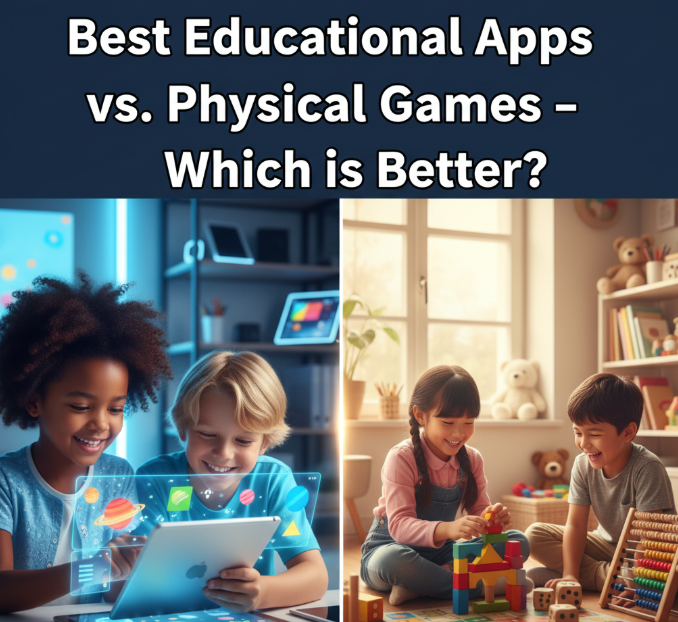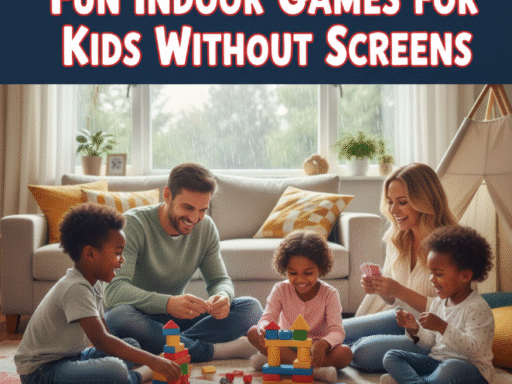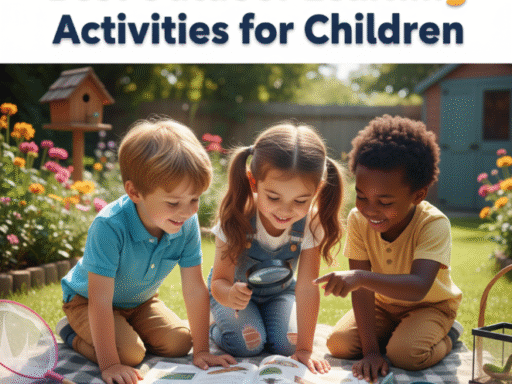Introduction: A Modern Dilemma for Parents and Teachers
Today’s kids grow up in a world where learning happens on screens and in playgrounds. Tablets and smartphones offer thousands of educational apps that teach math, science, reading, and even coding. At the same time, classic physical games—board games, puzzles, outdoor play—continue to shape social skills and critical thinking.
Parents and educators often wonder: Which one truly helps children learn more—educational apps or physical games?
This article takes a deep look at both options, comparing their benefits, challenges, and best uses so you can make an informed choice for your child.
Why This Debate Matters
-
Children spend over 4–6 hours daily on screens (according to multiple child-development studies).
-
Schools increasingly integrate digital tools into classrooms.
-
Families still value hands-on play for social development.
Balancing these two worlds is essential for raising curious, healthy learners.
The Power of Educational Apps
1. Engaging and Interactive Learning
Educational apps transform lessons into colorful games and activities. Features like:
-
Instant feedback (right or wrong answers)
-
Rewards and badges
-
Animations and sound effects
…keep kids motivated and eager to continue.
2. Personalized Lessons
Many apps adapt to a child’s skill level.
-
Struggling in math? The app slows down and repeats exercises.
-
Excelling in reading? It introduces tougher words and longer stories.
This custom pacing is hard to achieve in a crowded classroom.
3. Anytime, Anywhere Access
With a phone or tablet:
-
Kids can learn during car rides, waiting rooms, or vacations.
-
Parents can track progress through built-in reports.
4. Wide Range of Subjects
From language learning to space exploration, apps cover every topic imaginable.
Examples:
-
Duolingo Kids – languages
-
Khan Academy Kids – math, science, reading
-
Toca Nature – environmental awareness
The Magic of Physical Games
1. Builds Social and Emotional Skills
Board games, team sports, and playground activities teach:
-
Teamwork and cooperation
-
Conflict resolution
-
Empathy and patience
Face-to-face interaction helps children read facial expressions and body language, skills no app can fully replicate.
2. Encourages Physical Movement
Unlike sitting with a tablet, physical games:
-
Improve motor skills
-
Support healthy weight management
-
Boost coordination and balance
3. Stimulates Imagination
Open-ended play like building blocks or pretend cooking encourages:
-
Creative problem-solving
-
Storytelling
-
Critical thinking
4. Strengthens Family Bonds
Family game nights create memories and traditions that apps can’t replace.
Side-by-Side Comparison
| Feature/Benefit | Educational Apps | Physical Games |
|---|---|---|
| Learning Speed | Adaptive lessons speed up mastery | Depends on group pace |
| Social Interaction | Mostly solo or virtual | Face-to-face communication |
| Physical Activity | Minimal (screen time) | High (movement, coordination) |
| Cost | Often free or low subscription | Varies (board games, sports equipment) |
| Portability | Highly portable (phone/tablet) | Limited to physical space |
| Skill Variety | Wide range of academic subjects | Strong in motor, social, and emotional skills |
Advantages and Drawbacks
Educational Apps
Pros
-
Convenient and portable
-
Personalized learning paths
-
Instant feedback and progress tracking
Cons
-
Screen time concerns (eye strain, sleep disruption)
-
Risk of distraction from non-educational content
-
Limited physical movement
Physical Games
Pros
-
Promote healthy exercise
-
Strengthen social skills
-
Foster creativity
Cons
-
Require more setup and space
-
Less immediate feedback
-
Can be weather-dependent (for outdoor play)
Key Factors When Choosing Between Apps and Games
1. Child’s Learning Style
-
Visual learners may thrive with interactive graphics in apps.
-
Kinesthetic learners benefit from hands-on activities like puzzles or sports.
2. Age and Development Stage
-
Preschoolers (3–5): Short, supervised screen time plus plenty of physical play.
-
Elementary (6–10): Mix of educational apps for academic support and outdoor games for social growth.
-
Tweens (11–13): Balanced approach with apps for specialized subjects and physical team sports for leadership.
3. Educational Goals
Ask yourself:
-
Do you want to improve academic skills (math, science, reading)?
-
Or focus on life skills like communication, empathy, and physical fitness?
4. Screen-Time Guidelines
The American Academy of Pediatrics recommends:
-
Ages 2–5: Maximum 1 hour of high-quality screen time per day.
-
Ages 6+: Consistent limits and monitoring.
Strategies to Combine Both for Maximum Learning
Instead of choosing one over the other, consider a hybrid approach:
Create a Daily Balance Plan
| Time of Day | Activity |
|---|---|
| Morning | 20 minutes math or reading app |
| Afternoon | Outdoor game or sports |
| Evening | Board game or puzzle with family |
Link Digital Lessons to Physical Play
-
Learn about planets on an app, then create a solar system model with clay.
-
Practice new vocabulary digitally, then play a charades game using those words.
Family Rewards System
Set screen time as a reward after completing physical activities.
Example: 30 minutes of educational app play after 45 minutes of outdoor fun.
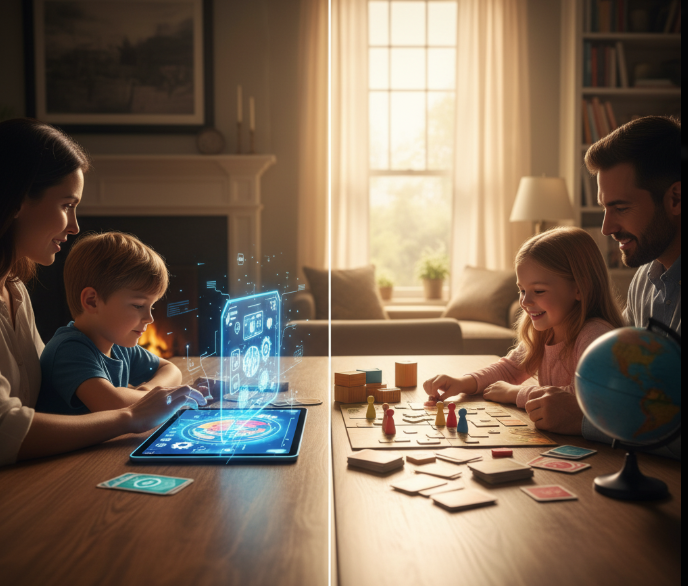
Practical Tips for Parents
Choosing the Right Educational Apps
-
Check reviews for age appropriateness.
-
Look for ad-free versions to avoid distractions.
-
Ensure apps align with school curriculum.
Encouraging Physical Games
-
Schedule regular family game nights.
-
Rotate games to keep interest high.
-
Include a mix of competitive and cooperative activities.
Sample Chart: Daily Balance Recommendation
(Example for a 9-year-old child)
This chart can be adapted to fit your child’s routine and school schedule.
SEO-Friendly Key Takeaways
-
Best educational apps vs. physical games is not an either/or decision—balance is key.
-
Apps offer convenience and academic focus, while physical games deliver social and physical benefits.
-
Parents should consider age, learning style, and daily routine when setting limits.
-
Combining both approaches results in a well-rounded learning experience.
Frequently Asked Questions
Q1. Are educational apps safe for young children?
Yes, if parents choose trusted, ad-free apps and monitor screen time.
Q2. How much physical play does a child need daily?
Health experts recommend at least 60 minutes of moderate activity for school-aged children.
Q3. Can apps replace traditional learning?
No. Apps are a supplement, not a substitute for real-world interaction and hands-on learning.
Final Thoughts: Striking the Perfect Balance
The debate between educational apps and physical games isn’t about declaring a single winner.
-
Educational apps shine when it comes to academic reinforcement and convenience.
-
Physical games excel at social, emotional, and physical development.
The real answer is to blend both worlds. Use technology to spark curiosity, then let real-life games transform that knowledge into experience.
With thoughtful planning, children can enjoy the best of both—growing into smart, healthy, and well-rounded individuals.
